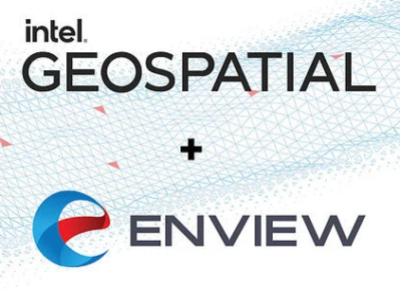 October 27, 2020v – Today, Intel announced its Intel Geospatial platform – a marketplace for data management, visualization, and analytics, featuring Enview. We’re proud that Intel is leveraging Enview’s AI to enable their platform’s 3D geospatial classification for faster turnaround of LiDAR analytics. Together we’re offering solutions for electric T&D, oil and gas, and governments to unlock geospatial insights at scale.
October 27, 2020v – Today, Intel announced its Intel Geospatial platform – a marketplace for data management, visualization, and analytics, featuring Enview. We’re proud that Intel is leveraging Enview’s AI to enable their platform’s 3D geospatial classification for faster turnaround of LiDAR analytics. Together we’re offering solutions for electric T&D, oil and gas, and governments to unlock geospatial insights at scale.
While 2020 will go down as a momentous year for many reasons – it is also turning out to be the year of LiDAR.
For decades, LiDAR has been used by geospatial analysts for mapping areas of interest, for giving military ground truth information, and by utilities to monitor infrastructure.
But now the biggest tech companies are also taking notice as Apple and Intel use LiDAR to expand market share and better serve their customers.
In addition to Intel’s announcement, Apple announced earlier this year the inclusion of a LiDAR scanner in their newest iPad Pro and now their iPhone 12 Pro. This is giving users the ability to create digital models of their rooms, move around virtual furniture like in the IKEA Place app, and measure distances and heights right from their phone.
At its core, for consumers, industry, and governments, LiDAR is a sensor that can enable people to create virtual models of their physical world – whether that’s a living room or entire communities to monitor wildfire risk.
Our need as humans to understand our physical world makes LiDAR an amazing tool with tremendous potential. And as sensors have gotten smaller, more accurate, and more affordable, small-scale projects like virtual bedroom remodels are no longer science fiction.
We saw this coming 5 years ago when we started Enview to unblock a critical piece of the puzzle of accessing these capabilities at scale. LiDAR and other three dimensional data contain incredible detail which makes analysis slow and difficult to automate. If you’re scanning your bedroom, this isn’t a problem. If you’re mapping a city, state, or entire nation, you’ll either wait months for insights or spend a fortune on manual efforts to make sense of the data.
The scalability of the Enview platform was a natural fit for the Intel Geospatial marketplace. Our team of experts in cloud-native processing of 3D geospatial data have pioneered leading AI specifically built for unstructured 3D data like LiDAR. While current methods can take weeks or more to process information, Enview provides actionable insights in minutes. We do this by combining novel AI with the power of cloud computing to automate 3D classification and segmentation, giving users the scalability to support nation-sized datasets. As a result, public and private sector organizations use Enview to virtualize the physical world and derive insights to protect people and infrastructure, and enhance national security.
Needless to say, this is an exciting time. When technology begins seeing momentum like LiDAR is seeing in 2020, new and amazing use cases begin to cross from potential to powerful. As I think about it, it is somewhat poetic that 2020 has become the year of LiDAR. In these uncertain times, making sense of the world around us gives us the one thing that still gives me hope – the chance to fix it.
—San Gunawardana
About Enview
Enview is pioneering next-generation AI to automatically transform 3D data into insights at unprecedented speed, scale, and detail. Public and private sector organizations use Enview to virtualize the physical world and derive insights to protect people and infrastructure, and enhance national security. For more information and a demo, visit www.enview.com.
